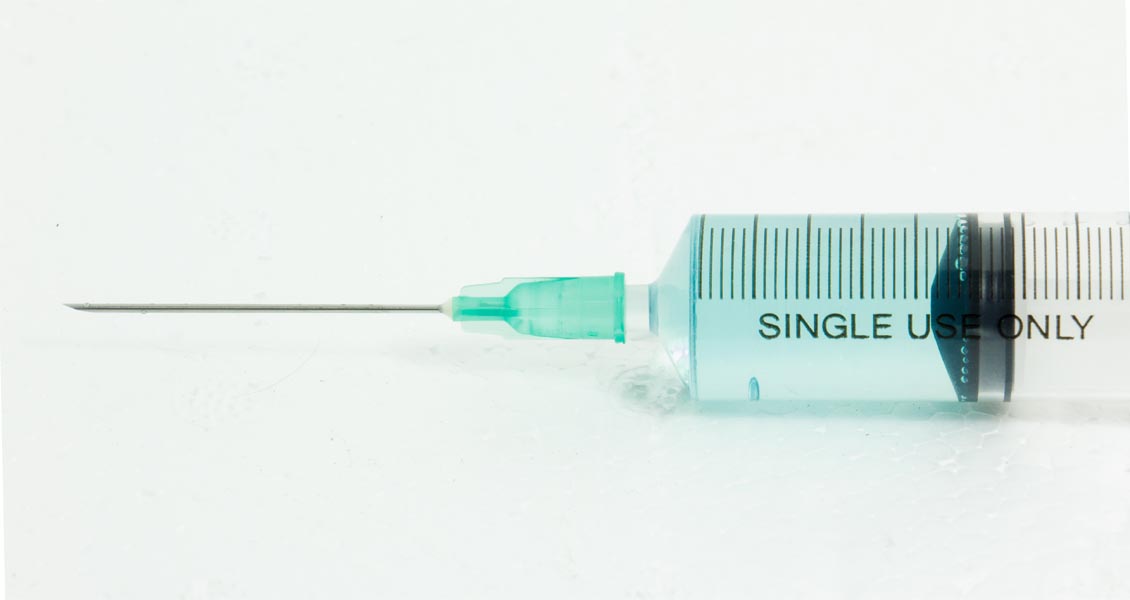

Injection needles are inevitable tools used for medical interventions. Francis Rynd, an Irish physician invented the hollow needle for subcutaneous injections in 1844. During the later years, Charles Pravaz and Alexander Wood developed hypodermic syringe for drug delivery in combination with the needle.
Hypodermic needles are made of stainless steel tubes of desired diameter ending with a sharp tip for piercing the skin. The hypodermal needle is an old medical tool, with its origin dating back to 19th century and has undergone little change.
Small upgradations have been incorporated for ensuring safety and efficacy. Accordingly, specifically tailored needles are being used for different applications and are in practice since the 1920s.
Fully developed hypodermal needles in combination with a disposable syringe came to be used during the 1950s. Scalpels and lancets are other tools routinely used in medical interventions, and commonly termed as “sharps”.
When and why needle reuse happens?
The reuse of needles and syringes is a global problem, though it is more prevalent among the developing countries, as most of these countries are facing acute shortage of medical devices and other resources.
This provokes the patients as well as the medical professionals to reuse disposable medical devices including needles. Treatment of chronic patients like diabetics or cancer patients, administration of multi-dose drugs and mass immunization projects are the common medical interventions where needle reuse is more common.
According to a WHO report, more than 40% of the total 16 billion annual injections in the developing world are administered through reused needles. The reused needles account for one-third of all Hepatitis B, 40% of Hepatitis C infections and 5% of all new HIV infections worldwide.
The most affected parts of the world include Africa, Eastern Mediterranean Europe, and Southeast Asia. However, the problem is quite widespread in the U.S. and other developed countries as well.
But most of the incidents remain unreported and the trend is progressive. Reuse and sharing of needles are very common among abusers of intravenous drugs, which contribute towards a major share of the total transmission of deadly blood-borne epidemics like AIDS, Hepatitis B, Hepatitis C, Tetanus, Cellutitis, Thrombophlebitis, Necrotising Fasciitis, etc. throughout the world.
What are the risks of needle reuse?
Blood-borne viral pathogens are a major concern for risk in cases of needle reuse, as they get transmitted to new individuals through contaminated needles and sharps. Such pathogens also thrive in other body fluids like vaginal secretions, semen, saliva, and discharge from the wounds.
Sometimes the viruses may also live in sterile body fluids such as pleural, pericardial, amniotic, peritoneal, synovial and cerebrospinal fluids. The individuals who carry these viruses may act as silent transmitters of the pathogens, but without showing disease symptoms by themselves.
Therefore, blood and body fluids being treated could be potentially infectious. The history of the origin and spread of HIV probably can be considered as the strongest evidence of disease transmission through used needles.
Hepatitis is another disease which more often gets transmitted among intravenous drug users by sharing needles and unsafe injection. More than 80% of the Hepatitis C infections are getting mediated by the use of shared needles among drug abusers.
It is presumed that more than 4.5 million people in the US are infected with hepatitis C at present and there are more than 200 million infected individuals around the world. This has raised Hepatitis C to the level of one of the most challenging public health epidemics of the present times.
Few consequences/case studies
According to WHO statistics, around 1.3 million people die every year because of the reuse of needles/syringes. Several cases of fatal infections like hepatitis, MRSA from the US have been reported as consequences of needle reuse since 2001.
In Mongolia maximum cases of Hepatitis transmission was reported during the 1970s and 1980s, prior to the introduction of disposable injection apparatus in the country.
Unsafe injection practices and reuse of needles and syringes have been attributed as the major cause for the spread of the diseases. But the situation is not very safe even now in Mongolia, as hundreds of new cases of Hepatitis B and C are getting registered every year. The patients undergoing surgeries and those receive blood products through transfusion are at high risk of infection.
Some success stories
A British entrepreneur, Marc Koska’s campaign against used needles, led to the revolution in Tanzania by the Govt. opting for the exclusive use of auto-disable (self- destructive) syringes/needles for all injections in the country as a major step towards the prevention of the transmission and spread of HIV infection.
How to ensure safe-injection?
Injections are part and parcel of the modern healthcare services and act as a life-saving medical intervention at a global level.
They saved millions of lives in the past and continue to do the same in the future as well. However, the risk of exposure to blood-borne pathogens continues to haunt this process, particularly because of the reuse of needles and syringes.
Despite the relentless efforts of WHO and Public Health Departments of many countries for ending the needle reuse, this continues to be a major cause of infection in the U.S. and other parts of the world.
Uncompromising policies prohibiting the reuse of needles and syringes, as well as the implementation of auto-disabling syringes at an affordable rate, surplus quantities, and with easy access to all regions of the world would probably facilitate avoidance of needle reuse.
Educating the public, and the medical and paramedical professionals regarding safe use and disposal of the disposable injection devices would help in achieving the goal.
An agile and efficient system of waste management accompanied by zero tolerance regulatory policies towards reuse of injecting devices indeed would play a critical role in implementing ‘safe-injection’ practices.

Add Comment